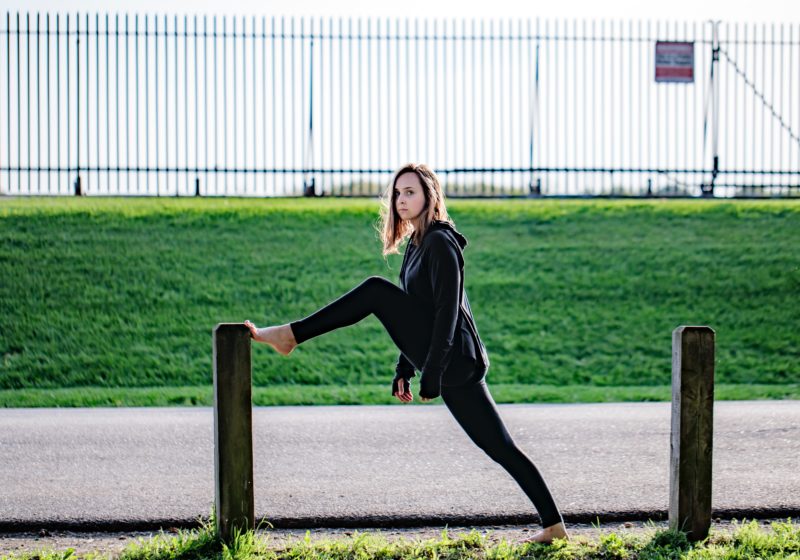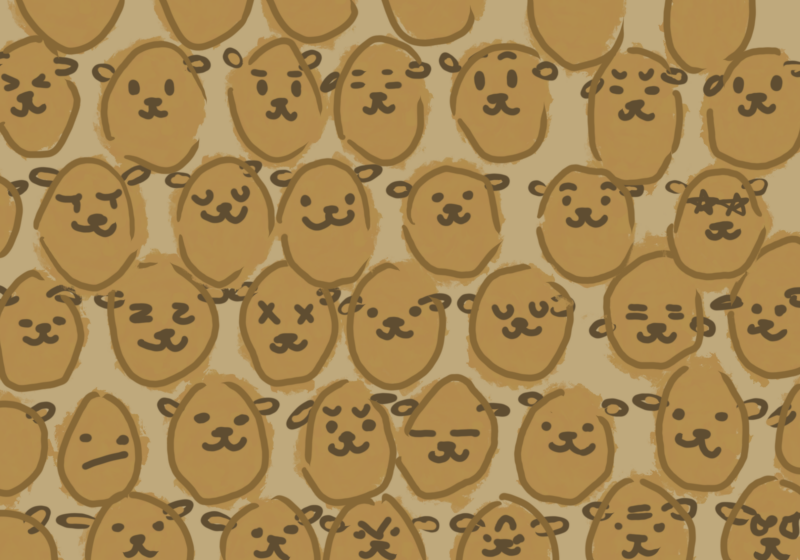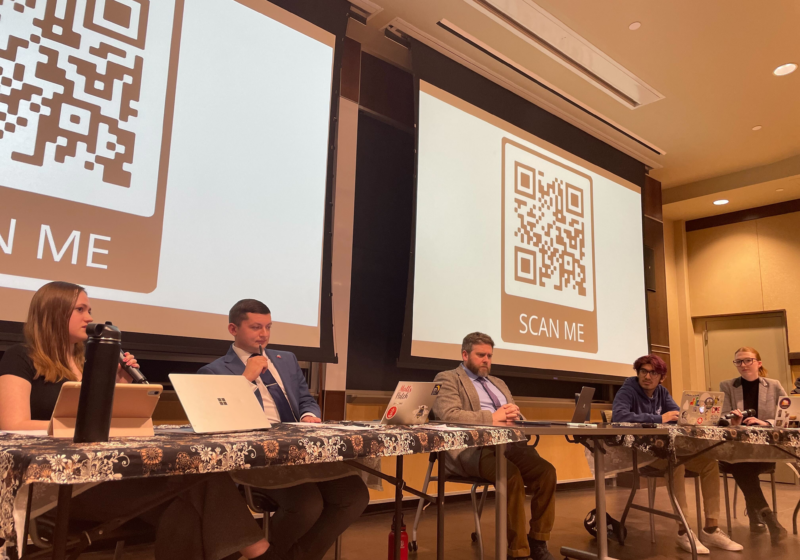Quantitative data is the standard for fields such as biology, physics, and statistics. However, some researchers ask questions that cannot be determined numerically. Senior Charlotte Pillow wants to know how dance impacts an individual’s resilience — a quality for which there is no traditional measure.
Building Resilience Through Movement
Dance is an art that has traditionally been reserved for the most elegant and athletic members of our society. The vast majority of people do not place themselves in that category and, consequently, shy away from dance.
This was evident to senior Charlotte Pillow when, last Meliora weekend, as a student in professor Rose Pasquarello Beauchamp’s class, Dance Performance Workshop, she asked students around our campus, “Can you dance for us for five seconds?” People fled.
Their response changed when Pillow used a slightly modified prompt: “Can you dance like your grandma does?” People seem to be averse to the word “dance” when it challenges their own abilities, but removing this element of judgement makes people more willing to try.
As a dance and public health major, Pillow is an advocate for the physical and emotional benefits of dance. She has roots in ballet but was inspired by the philosophy employed by the Department of Dance & Movement and gained experience in a wider range of dance styles. Pillow said, “All movement has value and can inform us of a lot. it’s a different mindset from living up to specific standards.”
“It’s about celebrating how you can move, how useful that is and how beautiful that is,” Pillow said. “Everyone moves, so everyone can dance.”
The freedom and strength Pillow found in movement translated to other areas of her life.
“It’s a great way to explore my creativity,” she said. “Working with others has taught me a lot about communication, verbal and nonverbal.”
Pillow made it a goal to demonstrate the ubiquitous benefits of dance, and to promote dance across diverse demographics. She designed and will run a workshop this semester, investigating the impact of dance on resilience. Her hypothesis is that adding an element of confidence through movement will increase her participants’ overall resilience. “If you feel like you’re skilled in one area of life, you have that pride within you that carries into other facets.”
Dance as a tool to build resiliency would be especially valuable to students on our campus, who face a barrage of stressful challenges throughout the semester. The ultimate impact of this research could also be reflected in other communities. “I could imagine in gym classes having more dance related activities with the purpose of learning about your body rather than just working out,” Pillow said.
She intends to help people become more comfortable with dance, by holding their abilities to different standards — not a traditional evaluation of performance. The workshop will promote the exploration of one’s full range of movement in a judgement-free environment. “Everyone has different tendencies, but you can get out of your comfort zone and discover new areas of strength,” Pillow said.
The study will enroll three college-aged women, who participate in three initial workshops and two performances at the end of the semester. Pillow will work with each participant individually to characterize resilience, rather than administering a general survey, before and after the workshop series. Personalized interviews challenge traditional beliefs that data should be quantitative, but can reveal insights that wouldn’t be observed by a standard survey.
“Everything we do is more qualitative,” Pillow said.
The series will focus on Laban movement analysis, which translates movement into eight different efforts. “I want to use [Laban’s] teachings to educate the participants on different ways the body can move and what it can do,” she said.
She aims to encourage participants to build a community within the workshop and to strengthen communication skills, further bolstering resilience. The performance at the end of the semester will offer another opportunity to strengthen skills outside of those traditionally associated with dance. “Coming up with movement is a reflection of creativity,” Pillow said.
The showcase, a compilation of student and faculty choreography, is called “Confluence”. The performances are scheduled for this Nov. 16 and 17 in Spurrier Dance Studio.
Pillow will graduate this December, and enter nursing school at UR. She plans to continue using dance as a tool for advocacy and awareness in the community, as well as educating students and community members about the benefits of dance.
“I hope that this will encourage people to get involved in the dance department,” Pillow said. “I’ll always be an advocate for dance, and will encourage dance as a way to stay fit and feel good emotionally. Anyone can benefit.”
Editor’s Note (9/16/18): The initial edition of this article was updated after Pillow clarified some of her earlier statements.






